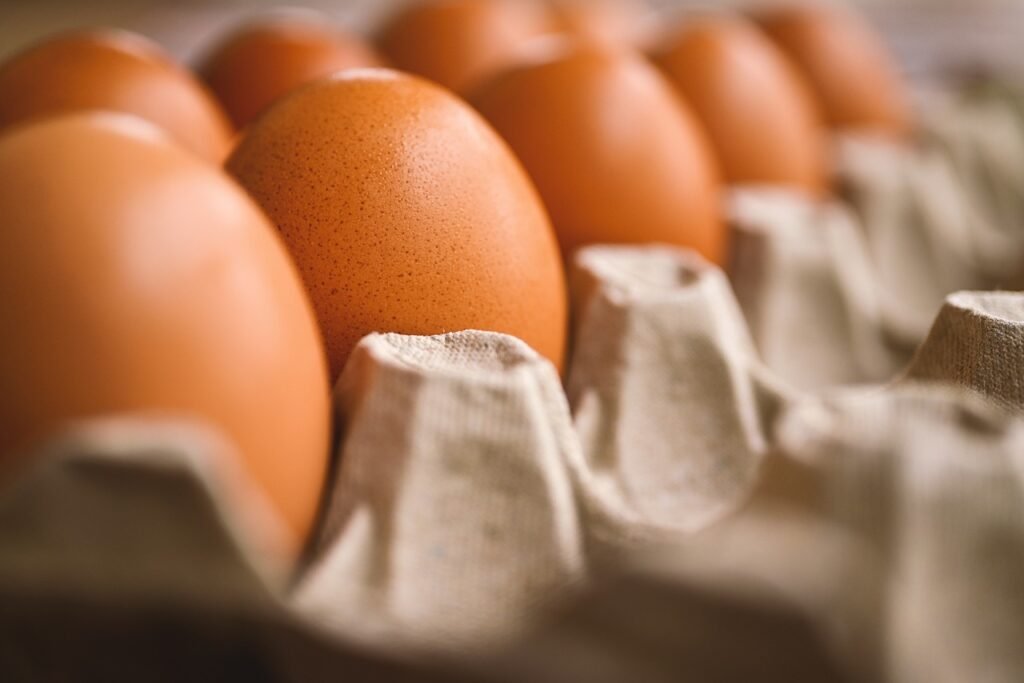Green Bean Growing Guide From Seed To Harvest To Health Benefits
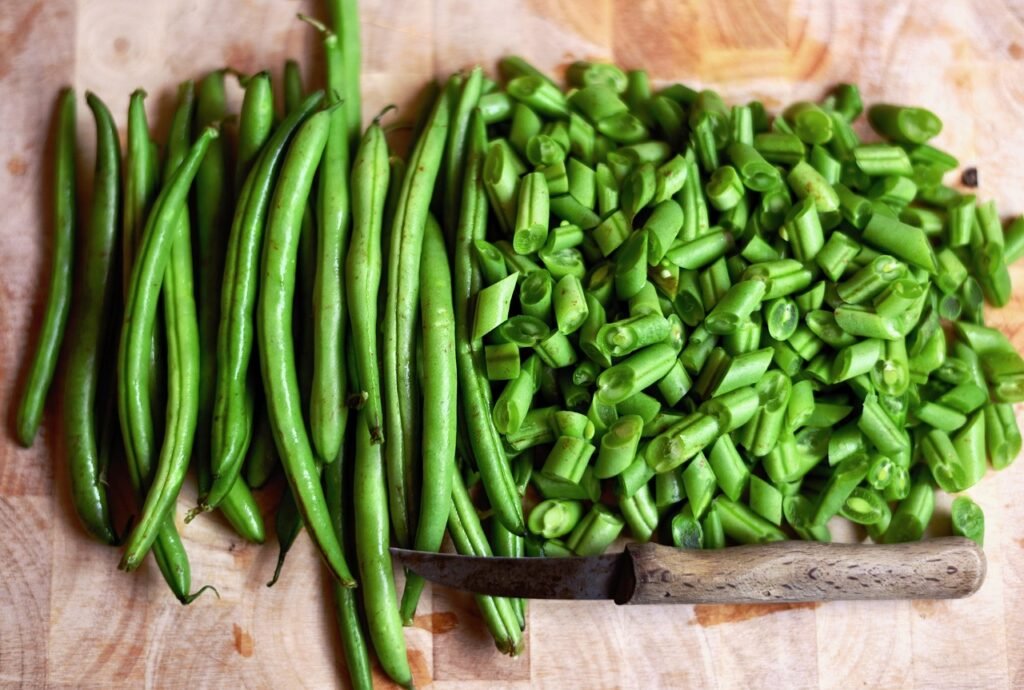
Are you interested in growing the versatile green bean but not sure where to start? Look no further!
In this comprehensive guide, we will take you through everything you need to know about growing green beans, from choosing the right variety to harvesting them.
We will also explore the amazing health benefits of green beans and how you can easily incorporate them into your diet.
So, grab your gardening gloves and get ready to become a green bean expert!
How to Grow Green Beans?
Growing green beans involves a series of steps from planting the seeds to harvesting the pods, with proper care and attention throughout the plant development stages.
- One crucial aspect of successfully growing green beans is selecting the right bean varieties suited for your region’s climate.
- Before planting, ensure the soil is well-draining and enriched with organic matter to promote healthy root development.
- Plant the seeds about 1-2 inches deep, spacing them appropriately to allow for proper growth.
- As the plants grow, provide consistent watering, ensuring the soil remains moist but not waterlogged.
Adequate sunlight is essential for robust plant growth, so choose a sunny location for your green beans. Regularly inspect the plants for signs of pests and diseases, implementing appropriate management techniques to safeguard their health.

Choosing the Right Variety of Green Beans
Choosing the right green bean variety for your garden is a crucial step towards a successful harvest. Green beans, also known as snap beans, come in three main types: pole, bush, and runner beans, each with its own growth habits and advantages.
- Pole Beans: These vines require support, like a trellis or stake, to climb. They produce beans over a longer period, offering continuous harvests throughout the season. Varieties like ‘Kentucky Blue’ and ‘Blue Lake’ are popular for their flavor and productivity.
- Bush Beans: Bush beans grow in compact bushes, making them ideal for smaller gardens or containers. They tend to mature all at once, resulting in a bountiful harvest. ‘Provider’ and ‘Contender’ are favored for their early maturity and resilience.
- Runner Beans: Often grown for their ornamental flowers as well as their pods, runner beans need support and are known for their distinctive flavor and long, flat beans. ‘Scarlet Emperor’ and ‘Painted Lady’ are two varieties celebrated for both their beauty and taste.
Selecting between pole, bush, and runner beans depends on your garden space, climate, and how you prefer to harvest. Each offers unique benefits and flavors to suit any gardener’s preference.
Preparing the Soil for Planting
Preparing the soil for planting green beans involves creating a nutrient-rich environment that supports healthy plant growth and sustainable gardening practices.
- This process begins with assessing the soil quality to ensure it has the right balance of nutrients for green bean development.
- By incorporating organic matter such as compost or well-rotted manure, gardeners can improve soil structure and fertility, providing a conducive environment for root growth.
- Sustainable fertilization methods, like using cover crops or natural amendments, help maintain soil health and reduce the reliance on chemical inputs.
- Ensuring the right soil conditions not only promotes optimal growth but also enhances the overall resilience of green bean plants against diseases and pests.
Planting Green Bean Seeds
Planting green bean seeds marks the beginning of the growing journey, requiring attention to seed depth, watering consistency, and the unique characteristics of pod vegetables and legumes.
When planting green bean seeds, it’s essential to carefully sow them at a depth of about 1 to 1.5 inches into well-draining soil. Ensure that the soil is kept consistently moist but not waterlogged to support germination. Green beans are sensitive to over-watering, which can lead to root rot. These legumes require a warm and sunny location to thrive, with temperatures ideally between 70-80°F. Incorporating organic matter into the soil before planting can provide essential nutrients for the initial growth stages of the green bean plants.
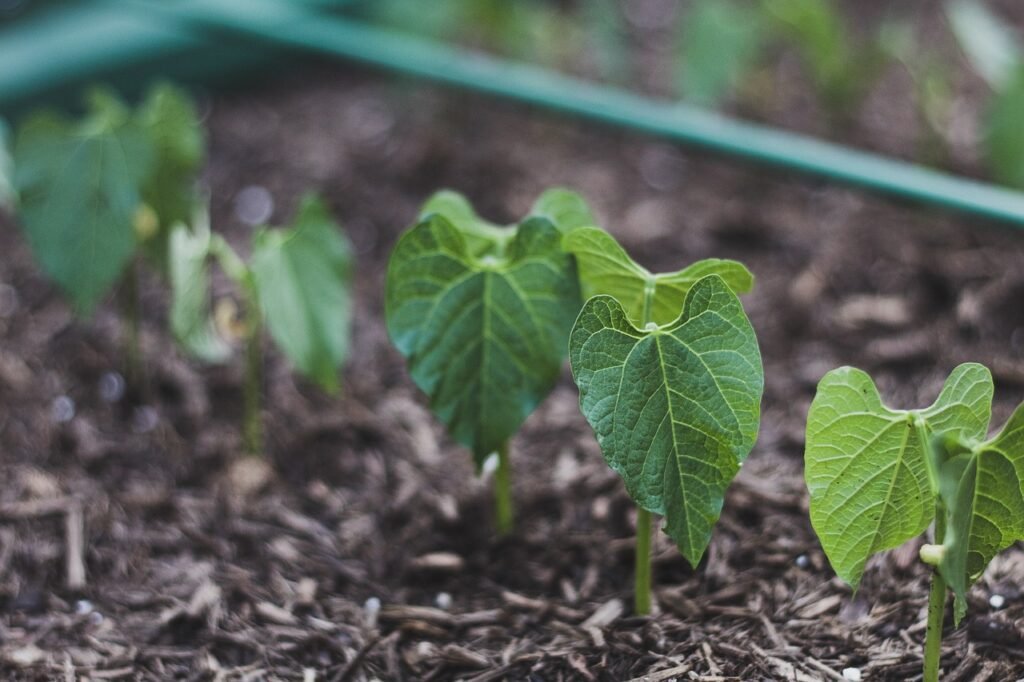
Providing Proper Care for Green Bean Plants
Ensuring proper care for green bean plants involves attention to watering schedules, sunlight exposure, pest and disease management, and the use of organic gardening techniques to promote healthy plant growth.
One critical aspect of caring for green beans is maintaining a consistent watering schedule. Green beans prefer evenly moist soil, so it’s essential to water them regularly, especially during dry spells. Overwatering can lead to root rot, so it’s important to strike a balance.
Green beans thrive in full sun, so ensure they receive at least 6-8 hours of sunlight daily. To prevent common pests like aphids and diseases like powdery mildew, consider using organic methods such as neem oil spray or introducing beneficial insects like ladybugs. Implementing proper spacing, providing adequate support for climbing varieties, and regularly inspecting plants for any signs of trouble are also key practices for maintaining healthy green bean plants.
Harvesting Green Beans
Harvesting green beans at the right time ensures a bountiful supply of fresh produce for home gardening enthusiasts, requiring precision in pruning techniques and harvesting practices.
By timing the harvest correctly, gardeners can enjoy beans at their peak flavor and tenderness. It’s recommended to pick green beans when they are firm but still snap easily.
Proper pruning helps stimulate new growth and prolongs the bean-producing period. When harvesting, gently snap or cut the beans from the plant to avoid damaging the stems.
Storing freshly harvested green beans in the refrigerator can help maintain their crispness and flavor. The satisfaction of growing and savoring home-grown produce adds an extra layer of joy to the garden-to-table experience.
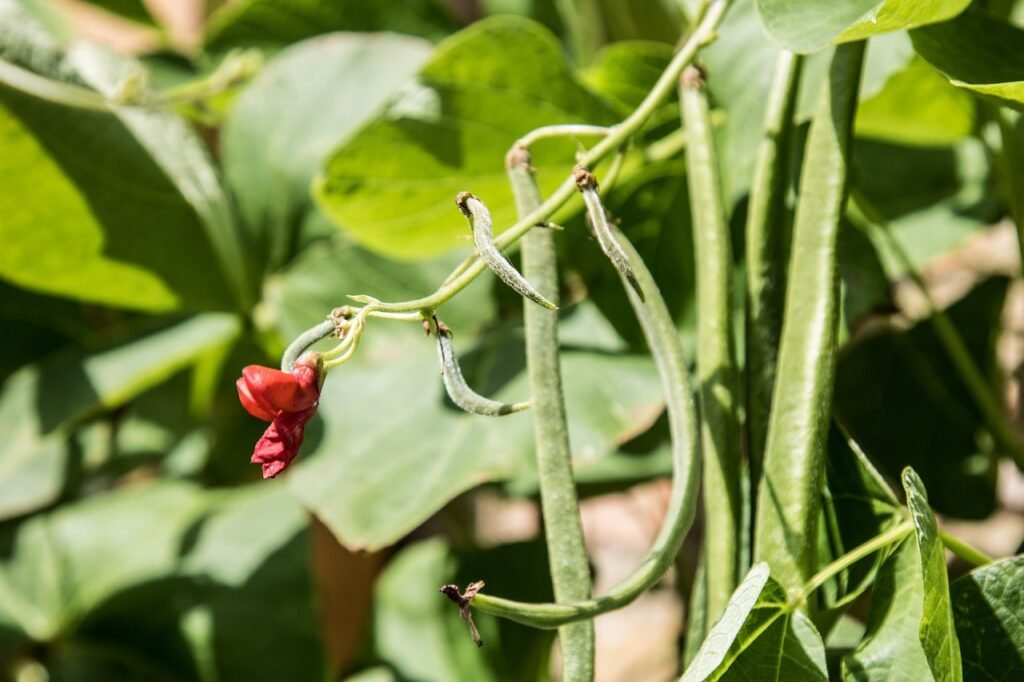
What Are the Health Benefits of Green Beans?
Green beans offer a wealth of health benefits, boasting a nutrient-rich profile that includes antioxidants, vitamins, minerals, fiber, and protein, making them a valuable addition to a balanced and nutritious diet.
They are particularly rich in antioxidants, such as flavonoids and carotenoids, which help combat oxidative stress in the body. Green beans are also a good source of essential vitamins like vitamin C, K, and A, along with minerals like potassium and folate. Their high dietary fiber content aids in digestion and promotes gut health, while their low-calorie nature makes them an excellent choice for weight management. Including green beans in your daily meals can contribute to overall health and well-being.
Rich in Nutrients
Green beans are packed with essential nutrients such as antioxidants, vitamins, and minerals, contributing to their reputation as a nutrient-dense food for maintaining a balanced diet.
These vibrant vegetables are particularly rich in antioxidants like carotenoids and flavonoids, which help combat oxidative stress and inflammation in the body.
In terms of vitamins, green beans are a good source of vitamin C, K, and folate, essential for immune function, blood clotting, and cell growth.
They provide minerals such as manganese, potassium, and iron, supporting various bodily functions including bone health, muscle function, and oxygen transport.
Including green beans in your meals can boost your overall health and vitality, playing a key role in promoting wellness and longevity.
Good Source of Fiber
Green beans serve as an excellent source of dietary fiber, offering benefits for digestion, gut health, and overall well-being as a valuable dietary fiber source.
They are known for their soluble and insoluble fiber content, which aids in promoting regular bowel movements, preventing constipation, and maintaining a healthy digestive tract.
The fiber in green beans helps to bulk up stool, making it easier to pass through the digestive system, thus reducing the risk of gastrointestinal issues. This fiber-rich vegetable supports the growth of beneficial gut bacteria, contributing to a balanced microbiome and improved gut function.
Including green beans in your diet can help promote satiety, regulate blood sugar levels, and support weight management goals.
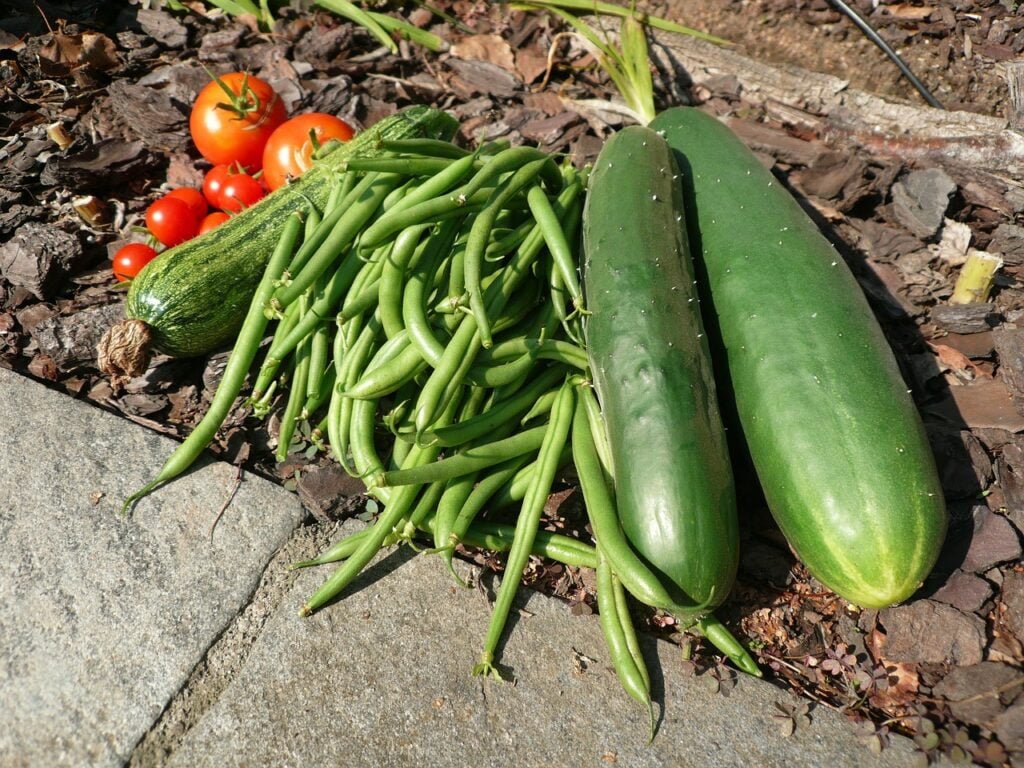
Promotes Heart Health
Green beans play a role in promoting heart health by providing essential nutrients, antioxidants, vitamins, and minerals that contribute to cardiovascular well-being and overall heart function.
The nutrients found in green beans, such as magnesium, potassium, and folate, are vital for maintaining healthy blood pressure levels and supporting proper heart function. In addition, antioxidants present in green beans help to reduce inflammation and oxidative stress, which are key factors in preventing heart disease. The vitamins in green beans, including vitamin K and vitamin C, support heart health by aiding in blood clotting and boosting the immune system.
By incorporating green beans into a balanced diet, individuals can enhance their cardiovascular well-being and reduce the risk of heart-related issues.
Helps with Weight Management
Incorporating green beans into the diet can aid in weight management due to their low-calorie nature, high nutritional value, and contribution to a balanced and healthy diet.
These vibrant vegetables are a powerhouse of essential nutrients, offering a rich source of vitamins, minerals, and antioxidants. Their fiber content also promotes satiety, helping to curb cravings and maintain a feeling of fullness.
By including green beans in meals, individuals can enhance their nutrient intake while keeping calorie consumption in check. The versatility of green beans allows them to be added to various dishes, making it easier to enjoy their benefits as part of a diverse and enjoyable eating plan.
Supports Digestive Health
Green beans contribute to digestive health by providing essential fiber, nutrients, and dietary benefits that support gut function, digestion, and overall digestive well-being as part of a balanced diet.
These vibrant legumes are packed with soluble and insoluble fiber, which plays a crucial role in promoting healthy digestion. The fiber content in green beans helps regulate bowel movements, prevents constipation, and supports the growth of beneficial gut bacteria.
Green beans are rich in vitamins A, C, and K, as well as minerals like potassium and iron, all of which are essential for maintaining a healthy digestive system. Including green beans in your meals can aid in improving digestion, reducing bloating, and enhancing nutrient absorption for better overall gut health.

How to Incorporate Green Beans into Your Diet?
Integrating green beans into your diet offers a versatile array of culinary possibilities, from simple recipes to elaborate dishes, providing a fresh produce option rich in dietary fiber and nutritional value.
Whether you prefer the crunch of sautéed green beans with garlic and almonds, the tenderness of steamed green beans drizzled with lemon juice, or the flavor burst of blanched green beans in a colorful salad, there are numerous ways to enjoy this nutrient-packed vegetable.
For those looking to add a twist, try stir-frying green beans with sesame oil and soy sauce for a tasty Asian-inspired side dish. As a source of fiber, vitamins, and minerals, green beans also make an excellent addition to stir-fries, soups, and pasta dishes, allowing you to elevate your meals with a healthy touch.
Simple Green Bean Recipes
Simple green bean recipes offer delightful culinary experiences, whether as standalone snacks, flavorful side dishes, or satisfying main courses that showcase the versatility of this nutritious vegetable.
Green beans are such a versatile and nutritious vegetable that can easily enhance any meal. For a quick and tasty snack, try lightly steaming green beans and sprinkling them with sea salt and a drizzle of olive oil. As a side dish, green beans sautéed with garlic and a squeeze of lemon juice add a burst of freshness to any plate. If you’re looking for a hearty main course, consider incorporating green beans into a stir-fry with your choice of protein for a balanced and flavorful meal.
Adding Green Beans to Salads and Soups
Incorporating green beans into salads and soups enhances the nutritional value and taste of these dishes, providing a plant-based protein source and fresh produce element to elevate the culinary experience.
Green beans offer a crunchy texture and a vibrant green color that not only adds visual appeal to salads and soups but also introduces a subtle sweetness and earthy flavor.
Sauteed green beans can bring a hearty component to a salad, while blanched green beans can provide a refreshing contrast in a cold soup. Tossing steamed green beans with a tangy vinaigrette or incorporating them into a creamy soup can further enhance the overall taste profile of these dishes.

Using Green Beans in Stir-fries and Casseroles
Utilizing green beans in stir-fries and casseroles introduces a versatile ingredient that adds texture, flavor, and plant-based protein to these dishes, creating a satisfying and nutritious meal option.
Green beans are a staple in many cuisines worldwide, offering a subtle sweetness and crunch that complements other ingredients perfectly. When cooking green beans for stir-fries, it’s essential to blanch them first to retain their vibrant color and crispness. In casseroles, green beans provide a delightful contrast to creamy sauces and hearty fillings. Consider combining green beans with garlic, ginger, and soy sauce for an Asian-inspired stir-fry or layering them with tomatoes, onions, and herbs for a flavorful casserole.
Blending Green Beans into Smoothies
Incorporating green beans into smoothies offers a unique way to enjoy the nutritional benefits of this vegetable as part of a healthy snack or meal, supporting balanced eating habits and dietary variety.
Green beans are not only a versatile veggie but also pack a nutritious punch when blended into smoothies. Their high fiber content aids in digestion and helps keep you feeling full and satisfied. Green beans are a great source of vitamins A, C, and K, as well as minerals like manganese and potassium. By adding them to your smoothies, you can elevate the nutrient profile of your beverages while adding a natural sweetness and vibrant green color to your drinks.
Green Bean Growing Guide Wrap Up
Green bean cultivation offers a rewarding gateway into vegetable gardening, yielding fresh, flavorful beans that outshine store-bought varieties. To broaden your gardening horizons and enhance your skills, we invite you to join our vibrant community.
Our blog is a treasure trove of knowledge, featuring comprehensive growing guides and expert gardening tips for a plethora of vegetables. By subscribing to our newsletter, you’ll gain access to exclusive insights, seasonal advice, and the latest gardening innovations.
Embrace the journey with Garden Guys, where we’re dedicated to helping you cultivate a thriving garden. Let’s grow together, turning your green aspirations into lush, productive realities.
Frequently Asked Questions
A green bean growing guide is a set of instructions and tips for successfully growing green beans from seed to harvest. It includes information about soil preparation, planting, caring for the plants, and harvesting.
To start growing green beans from seed, prepare a sunny area with well-drained soil. Then, plant the seeds about 1-2 inches deep and water regularly. In about 7-10 days, the seeds will sprout and begin to grow.
It is important to water green bean plants regularly, about 1-2 inches per week. They also benefit from a layer of mulch to retain moisture and prevent weeds. Additionally, adding a balanced fertilizer can help promote plant growth.
Green beans are ready to harvest when they are about 4-6 inches long and the pods are firm but not tough. This usually occurs about 60 days after planting. It is important to harvest regularly to encourage continuous production.
Green beans are a good source of fiber, folate, and vitamin C. They also contain antioxidants and may help improve digestion and heart health. Additionally, they are a low-calorie and low-fat option for a nutritious diet.
Yes, green beans can be grown in containers as long as the container is at least 12 inches deep and has good drainage. Choose a variety that is suitable for container growing and make sure to water and fertilize regularly.



